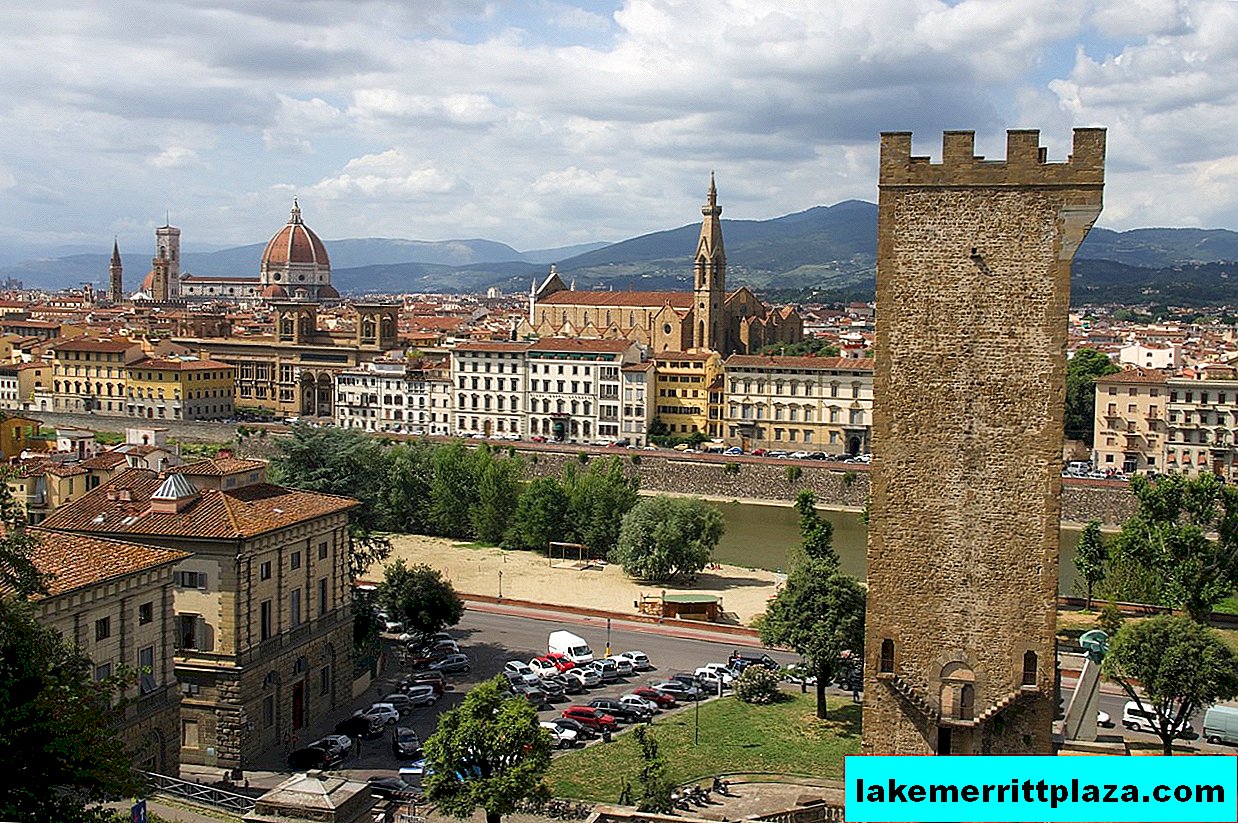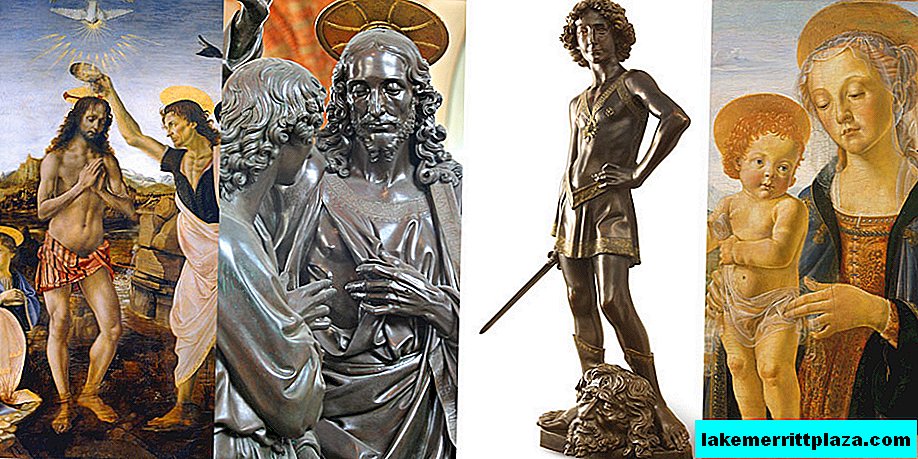Sardinia is an island located quite far from mainland Italy. For this reason, both climatic conditions and cultural features are quite different from traditionally Italian. Most of the island is occupied by picturesque beaches surrounded by bizarre cliffs, olive and nut groves, various natural and historical sights of Sardinia, causing the constant interest of tourists from all over the world. Blogoitaliano prepared a TOP-list of the most interesting places in Sardinia, visiting which you can get an idea of the history and modern life of the island.
10.Murales
Murals is a unique type of art that first appeared on the streets of the town of Orgosolo in the 60s of the last century. The first murals arose as a protest against the authorities - low living standards, unemployment, poverty, later wall painting spread throughout the island. Now paintings on the walls of houses, depicting scenes from the ordinary life of the islanders, as well as telling about traditions and national holidays, appeared in almost all the towns and villages of Sardinia.
Especially a lot murales, attracting connoisseurs of beauty, are in the town of Tinnur. It is curious that in a city with a population of about three hundred people, more than one hundred murals are located. The painting of houses in Tinnur was handled by the local artist Pina Monnet, who became famous thanks to murals. The artist's brushes belong to almost 400 wall paintings throughout Sardinia.
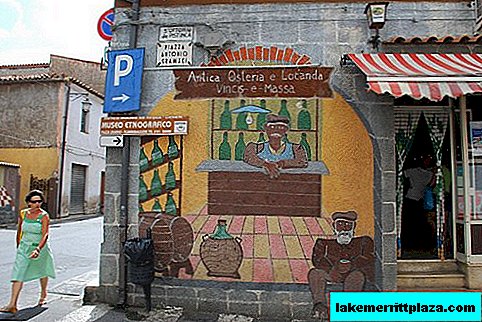
Murals is painted by both professional artists and ordinary people.
There are many magnificent murals in the village of San Sperate, located near Cagliari. These paintings were created by the artist Pinuccio Schiola and his students, who worked in the village in the 60-70 years of the last century.
Modern murals are often called the "wall newspaper" - they often reflect various events on a global scale. Murals is painted by both professional artists and ordinary people who want to portray something - special permission for this is not required, it is only necessary to obtain the consent of the owners of the house.
9 tombs of giants
The grandiose buildings, dating from the middle of the 1st century BC, were called "Tombs of the Giants". These are unique sights of sardinia they are grandiose structures with a length of about 15 meters and a height of 4-5 meters, composed of multi-ton stone blocks, processed in a special way.
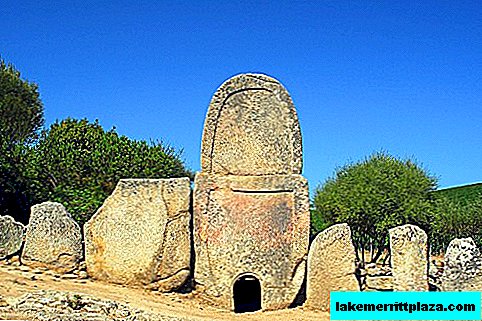
The tombs of the giants are grandiose buildings of the middle of the 1st century BC
By their structure, tombs resemble dolmens - two vertical slabs installed parallel to each other, covered by a third, acting as a roof. Often there are structures on the top plate of which some images are carved.
About three hundred such historical monuments were found in Sardinia, similar structures are also found in Ireland (the most famous of them is Cort Cairn) and in Malta, whose megalithic temples very much resemble the tombs of giants.
8 Basilica of San Gavino
To the oldest sights of sardinia refers to the Basilica of San Gavino, located in the town of Porto Torres on Mount Angelo. The basilica, made in the Romanesque style, was built in the XI century, a few centuries later elements were added in the style of Catalan Gothic.
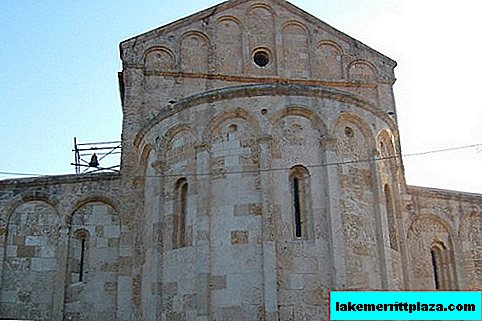
In the Basilica of San Gavino there are sarcophagi with the relics of the holy martyrs
The construction consists of three naves, the arches of which rest on massive columns. On one of the pilasters of the building there are inscriptions telling about the burial of noble persons in the basilica, in the crypt adjacent to the side naves, there are skillfully finished sarcophagi with the relics of the holy martyrs Proto, Gavino and Yanuari. In the northeastern part of the building are colored statues of martyrs to whom the church is dedicated, laid on a wooden hearse.
7.Villa Tigeliya
Architectural complex Villa Tigelia located in Cagliari, near the Roman amphitheater, at the foot of the Buon Sammino hill. During the excavation, three buildings were discovered; in two of them, well-preserved historical exhibits were found - unique plaster decorations, a mosaic floor, ancient murals.
They called these structures, discovered as a result of excavations, in honor of the Sardinian musician Tigelius Germogen - they initially believed that this was the place where his dwelling was located. Later it turned out that archaeologists were wrong, but the name remained the same.

Villa Tigelia is located in Cagliari, near the Roman Amphitheater
Villa Tigelia was built at the end of the 1st century BC - the beginning of the 1st century AD, the structure of the structure resembles the Roman four-columned atriums, which are a portico with four columns located at the corners of the pool, which serves to collect rainwater.
6. The grotto of Neptune
In the north of the island, 12 kilometers from Alghero, on Cape Capo Caccia, there is another attraction of Sardinia - grotto of neptune. According to legend, this cave was discovered by fishermen who hid here during a sudden storm. They wanted to hide behind a rock, but with strong waves the boat literally brought into the cave, where, under the light of torches, fantastic sparkling columns were discovered.
The fishermen decided that in such a magical cave there must certainly be a treasure, went in search of it, got lost and, having not found a way out, died. Since then, Neptune has been saving its treasures, not allowing anyone to find them.
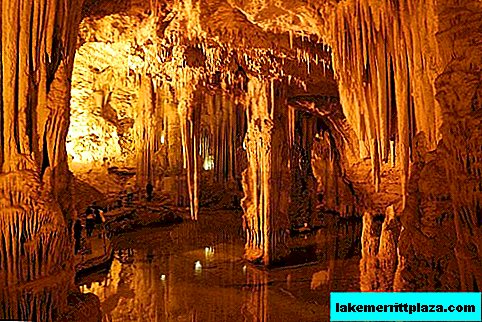
In the cave of Neptune several halls with amazing beauty stalactites and stalagmites
Inside the cave there are several halls with a lot of skillfully illuminated stalactites and stalagmites, in one of the halls there is an underground salt lake with a depth of a little less than ten meters, in the center of which stands a column.
Get to grotto of neptune can be by sea - on a boat from the town of Alghero, or on foot, going down the cliff along a long stone staircase with 600 steps.
To be continued…
Photos by: Nicolas Nojarof, Hari Seldon, Alessandro, Cristiano Cani, Gavino Bazzoni, David McLaughlin.




